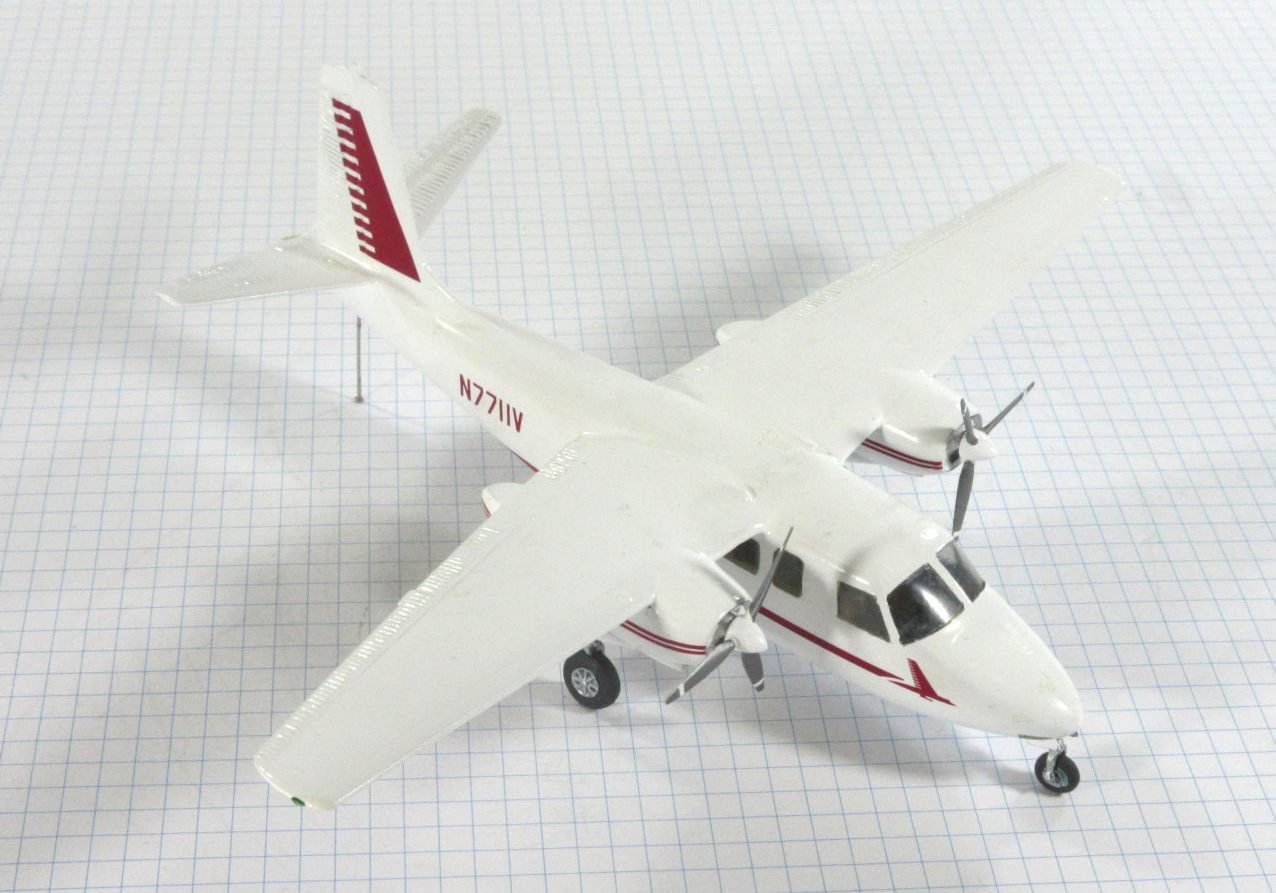By the time I was ten or so my parents had figured out that I liked aeroplanes, perhaps the small lineup of Airfix and Frog models on the shelf near my bed was a clue. Being good parents they fed this interest by taking me to the occasional airshow held in our region. By the standards of the modern display they were modest affairs with some Tiger Moths, Victa Air Tourers and Austers. At some of these shows the highlight was an aerobatic display by one of the handful of Mustangs allowed on the civil register. I don’t know what my parents thought of these occasional trips to airshows, I’m sure my sister found other ways to amuse herself on those occasions, but I soaked them up.
One of the delights of these events was the static flight line which had its share of Tiger Moths, Air Tourers and the like. Occasionally there were stand-outs and I still recall seeing my first Beagle Basset, a very sleek all metal little machine standing among all the wood and fabric machines of the times. There were two more aeroplanes that captured my imagination, all metal light air transports, the Piaggio 166 (in Airlines of South Australia livery as I recall) and an Aero Commander. Being Italian, the Piaggio was far more elegant in design than the Aero Commander but, like many American aeroplanes, the Aero Commander had a big and simple honesty to its design that made it memorable.
The Piaggio and the Aero Commander stayed in my memory and from time to time I tried to track down kits for them. Not unsurprisingly, kit manufacturers of the time were not interested in such uninteresting – to the majority of model makers – aeroplanes and kept on churning out the Spitfires, Mustangs, Bf109s and Zeros. So nowhere could I ever find kits of either of those two long desired for aeroplanes. This is not surprising because kits of them did not exist. Comet had released a model of the Aero Commander in the box scale of 1/81 in 1954 that was re-released by Aurora in 1963, and has not been seen since. No kit at all existed of the Piaggio 166 until 2000 and then only in a very challenging looking vacform kit, and then only in military versions that need conversion back to civil standard. I have one of those kits but am not bold enough to have started work on it after acquiring it almost a decade ago.
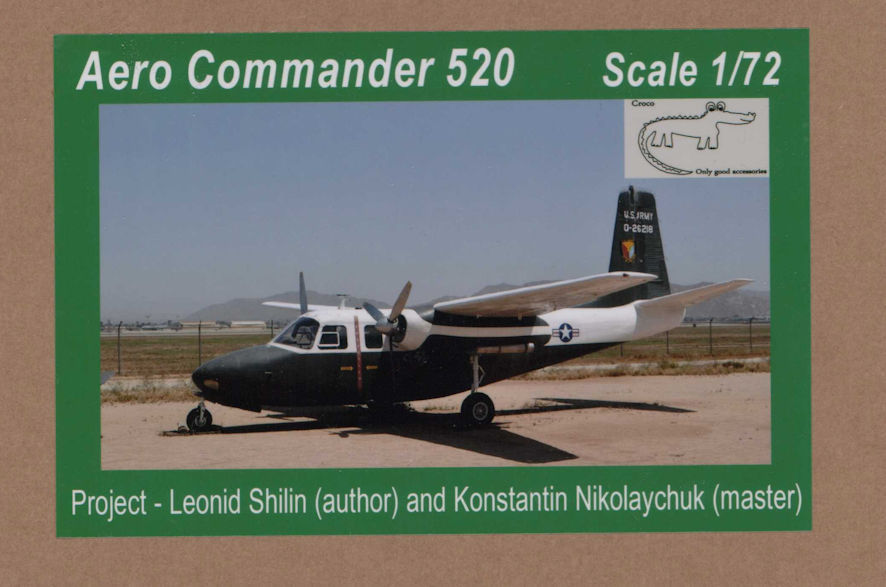
The Aero Commander remained beyond my reach until a few months ago when I received the latest news release from the Aviation Megastore in the Netherlands. This is an interesting shop that sells around the world, often very interesting and obscure items that tickle the acquisition circuits in my head, but their fees for postage and handling are so high that that often costs more than the kit they are offering. As a result, I use them very rarely and tend to rely on cheaper (relatively) sources to feed my habit. On this occasion, however, they offered a 1/72 kit of the Aero Commander from a Lithuanian company I’d never heard of before, at a not totally outrageous price – though the price of the kit and getting it to me was. However, it was an Aero Commander, I’d been looking for a kit of one for almost half a century and here it was. How could I not get one. (I did check with my other usual sources to see if they had it on offer, in the hope of getting a lower handling postage cost, but none of them had it. I looked up the manufacturer to see if I could get it direct from them, and they directed me back to the Aviation Megastore. What else could I do but pay the outrageous price they wanted?)
The kit arrived three or four weeks later, along with another kit I ordered just to make the postage cost seem a little less enormous. With almost undue haste I had the kit on my work bench and open, and I was not disappointed. It is a full resin kit, but the resin is beautifully moulded for the most part with lightly engraved lines as good as you would find on the best injection moulded kits these days. There was a pretty good cabin interior and engines to go in the cowlings.
Unlike many short run or resin kits this cabin interior delighted me by going together nicely and fitting into the fuselage halves without the usual trimming and fitting that goes with this kind of kit. What a happy modeller I was.
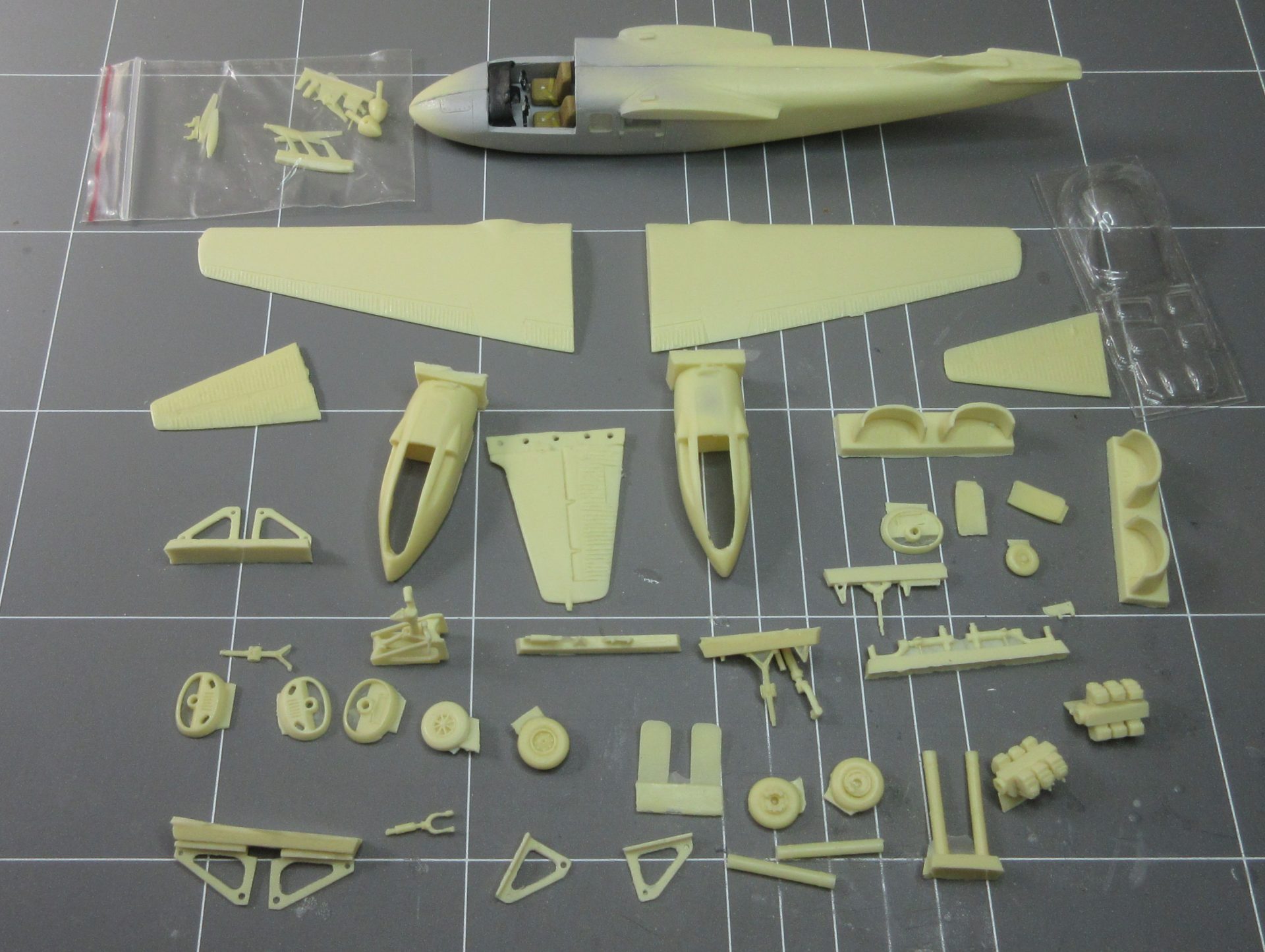
Then things started to go wrong, in particular the cabin transparencies. While the resin items in the kit are some of the best resin moulding I’ve worked with, the cabin windows and windscreen are some of the most imprecise and badly formed vacformed celluloid I’ve ever had to deal with. The parts for the side windows don’t have much to do with the spaces in the resin parts that they are supposed to fill and it would take a magician to get the windscreen part to fit well. Eventually this annoying piece of celluloid and I reached an agreement that it would pretend to fit if I pretended to be happy with it and used a remarkable amount of filler to make up the difference without totally obscuring the very nice cabin interior that I had made.
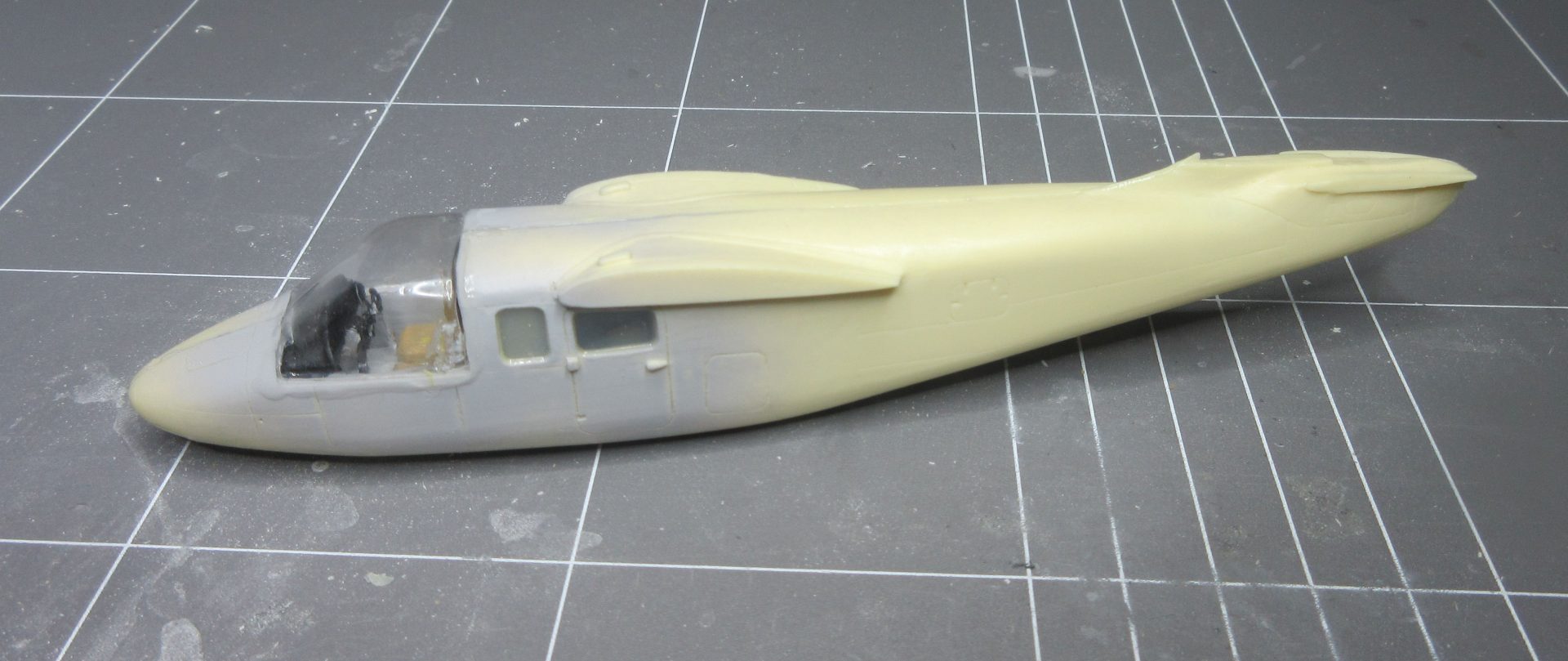
My disappointment at this turn of events put me off the kit for a while and it languished at the back of my shelf of doom. Eventually, however, I got over the disappointment and decided to press on with the kit. I had to, it was the only way I was going to be able to add a much desired Aero Commander to my collection. The wings and tail surfaces went on relatively well but I needed a lot of filler around the fuselage joint with the wings and only a little with the tail, fortunately. One of the nice things about this kit is the delicate reproduction of the corrugated control surfaces and I had to take a great deal of care not to damage them while applying and sanding off the necessary filler.
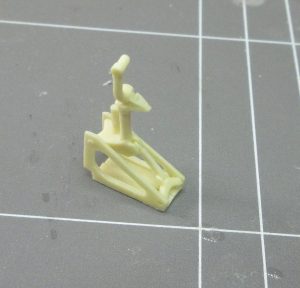 Next was the undercarriage, which is made up of some finely moulded but also delicate resin pieces. At this point I was forced to read the kit instructions which are hand drawn but very elegantly and precise, and are a great help (unlike the hand drawn instructions that come with the kits of a certain French company). I then discovered that the kit comes with parts for both the Aero Commander 520 and the slightly later 560 model. Fortunately for me, the only differences between the two in this kit are the undercarriage and the engine nacelles, so it was not too late. The kit instructions suggest to assemble the undercarriage parts (which requires at least three hands to do easily) and insert them into the nacelles after they have been attached to the wings. You can do it that way if you want to, and I had to, but it turns out that the undercarriage assembly is slightly wider than the holes allowed for them in the nacelles. Only some very careful removal of resin from the openings and from the assemblies resolved that problem, along with a test of my knowledge of harsh language.
Next was the undercarriage, which is made up of some finely moulded but also delicate resin pieces. At this point I was forced to read the kit instructions which are hand drawn but very elegantly and precise, and are a great help (unlike the hand drawn instructions that come with the kits of a certain French company). I then discovered that the kit comes with parts for both the Aero Commander 520 and the slightly later 560 model. Fortunately for me, the only differences between the two in this kit are the undercarriage and the engine nacelles, so it was not too late. The kit instructions suggest to assemble the undercarriage parts (which requires at least three hands to do easily) and insert them into the nacelles after they have been attached to the wings. You can do it that way if you want to, and I had to, but it turns out that the undercarriage assembly is slightly wider than the holes allowed for them in the nacelles. Only some very careful removal of resin from the openings and from the assemblies resolved that problem, along with a test of my knowledge of harsh language.
After that trial of nerves and skill it was on to the engine bays at the front of the nacelles. The kit supplies engines to go in them and two different kinds of engine fronts for the 520 or the 560 so I had to peer carefully at the instructions to discern the differences. I don’t know that there is much advantage in using the engines and, as I later found out after having installed them, it might be better to put some weight in the spaces instead because this model ended up being a tail sitter, marginally, and a little weight there might have made the difference. It turns out that the engine panels and the engine fronts do not fit as well as the earlier parts had, but that’s what filler is for when it comes to making these kinds of kits. After that, most of the hard work is done.
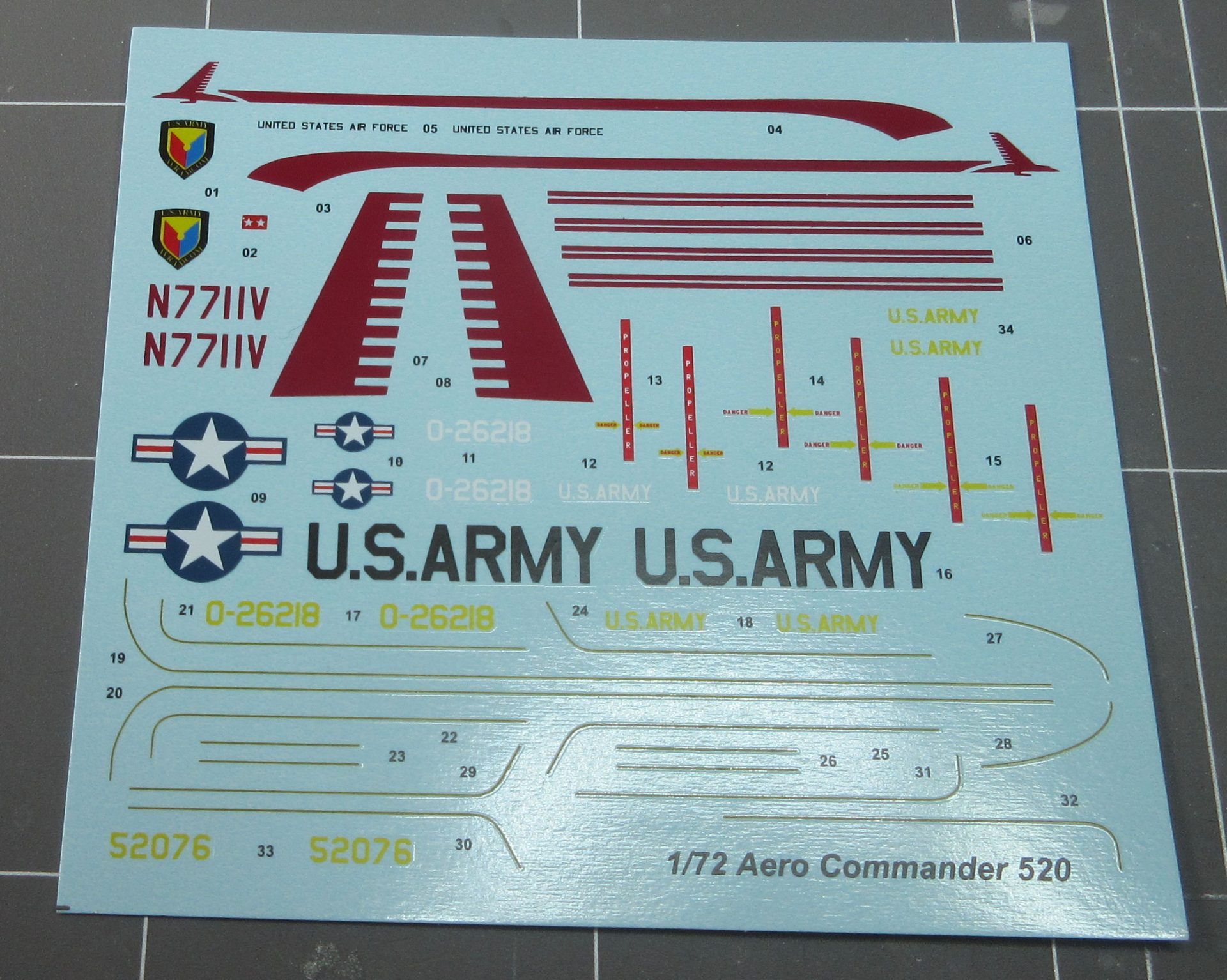
The kit comes with decals for a US Army Aero Commander in a rather uninteresting looking white and brown (or perhaps olive drab) scheme which looks as though it would be a serious challenge to mask successfully. There is also markings for a civil version, though this is not entirely clear until you peer at the instructions and decal sheet long enough to figure out what is going on. The advantage of this scheme is that the aeroplane is white all over, so no really difficult masking becomes necessary. I did a google search in the hope of finding an Australian registered Aero Commander 520 that I could make, but was not successful. I’m not that disappointed because, after the challenges of getting this kit together reasonably well, having a simple but nice looking paint scheme is a relief.
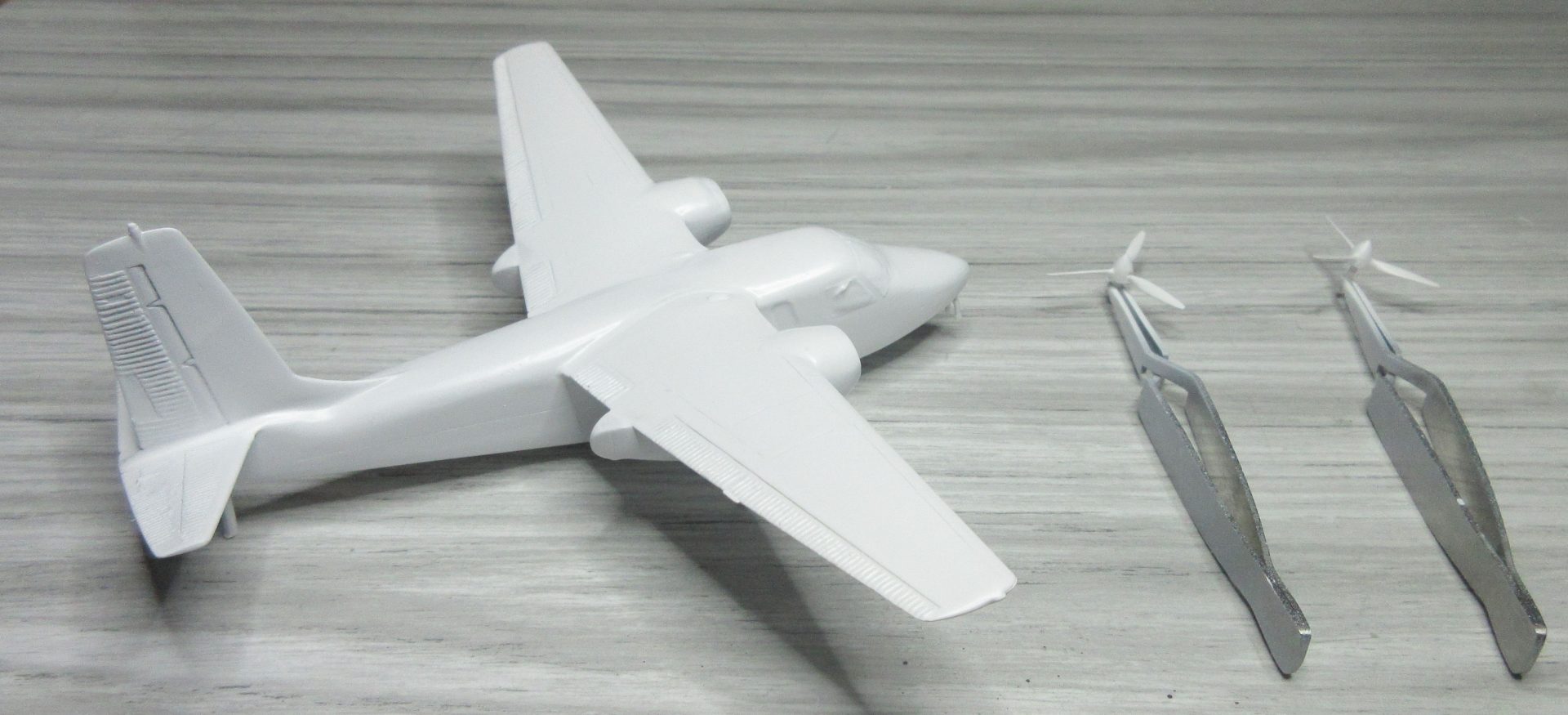
This model looks just as I remember the Aero Commander looking when I first saw one, so I’m glad to have it despite the problems of making it successfully (note that I didn’t say ‘well’). I’m thinking again about that Piaggio 166, but don’t hold your breath.
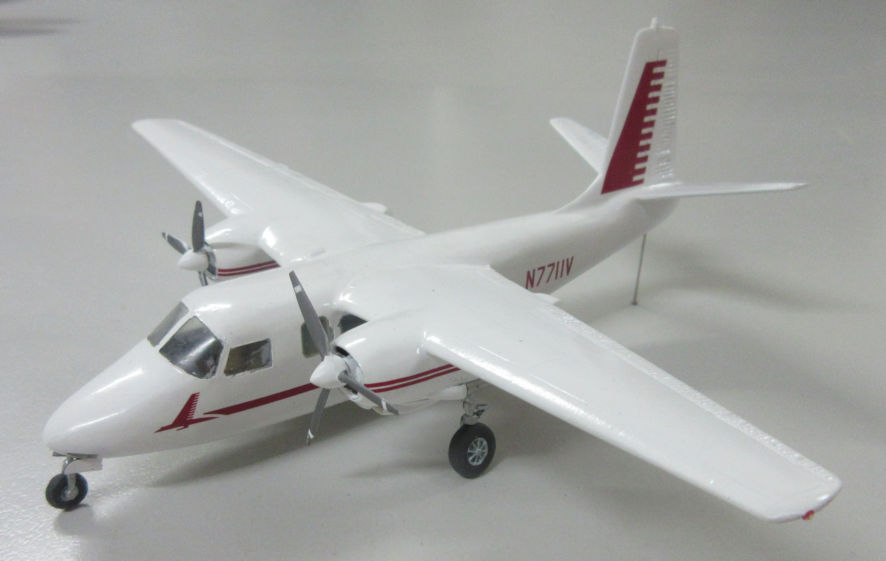
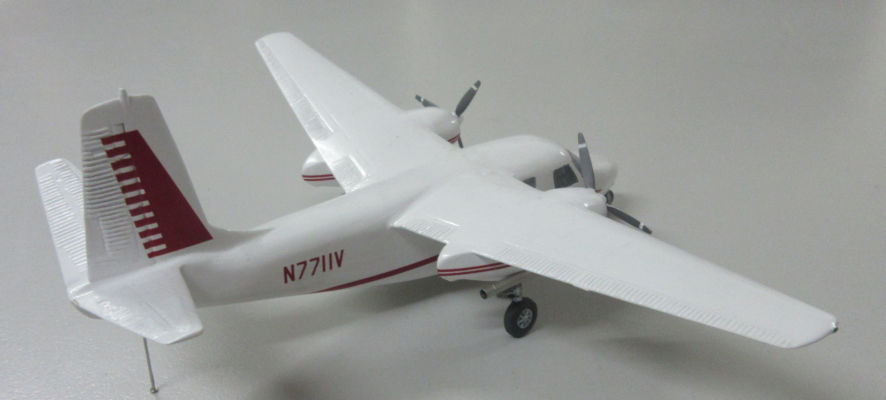
Leigh Edmonds
April 2019
